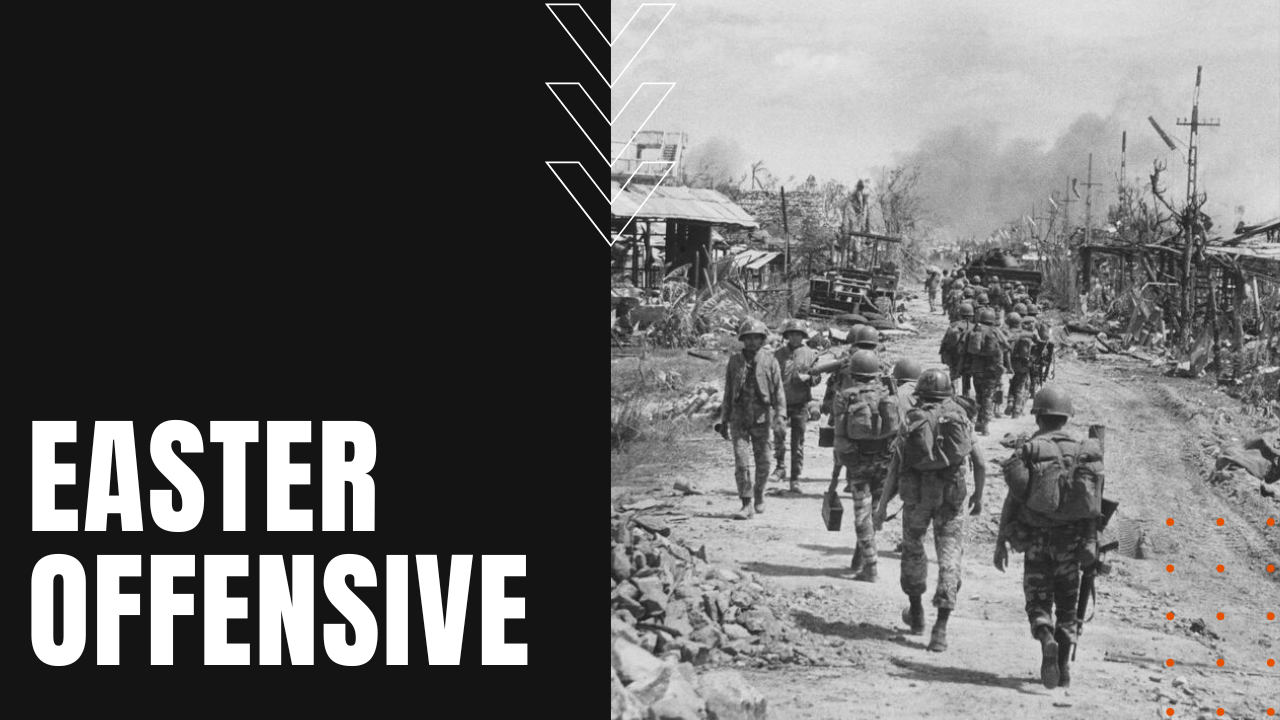Easter Offensive

After the North Vietnamese Tet Offensive of 1968, which took American and South Vietnamese forces by complete surprise, by late 1971, U.S. Commander General Creighton Abrams and other top military leaders believed another offensive by the Communist North was in the planning stage—if for no better reason than to strengthen their bargaining power at the ongoing Paris Peace Accords.
From a timing standpoint, Creighton believed the VC would launch another Tet-style offensive, on or near the January 31st celebration, but instead, the enemy attacked with unexpected ferocity in what became known as the Easter Offensive.
What Was the Easter Offensive?
Beginning on March 30th and ending on October 22nd, 1972, the Easter Offensive began when North Vietnamese forces engaged in a simultaneous three-front invasion of South Vietnam, characterized by conventional infantry-armor assaults backed by heavy artillery. Employing some 200,000 to 300,000 North Vietnamese soldiers—an invasion force not seen since the Korean War, when some 300,000 Chinese troops crossed the Yalu River into Communist-backed North Korea.
Conceived by North Vietnamese military planners, the First Corps Tactical Zone soon overran South Vietnamese defensive positions in a month-long battle that saw the city of Quảng Trị fall to northern forces, before moving south toward the city of Huế.
At the same time, the VC’s 2nd Corps Tactical Zone advanced toward Kon Tum City in an attempt to split South Vietnam in two, while the 3rd Corps Tactical Zone saw North Vietnamese forces take Lộc Ninh before advancing on the capital of Bình Long Province at An Lộc. As the offensive unfolded, April proved to be a month of advances for the North, while May witnessed a period of defensive equilibrium and resupply for the North’s newly-captured territories.
Easter Offensive Outcome
June and July, likewise, saw a period of counter-attacks by American and South Vietnamese forces, leading to the September recapture of Quảng Trị, and although early North Vietnamese successes were impressive, the VC experienced high casualty rates due to inept tactics and the increasing application of U.S. and South Vietnamese air power, culminating in Operation Linebacker, which was the first sustained bombing of North Vietnam since November of 1968, making the Easter Offensive of 1972, one of the deadliest events in the Vietnam War.
